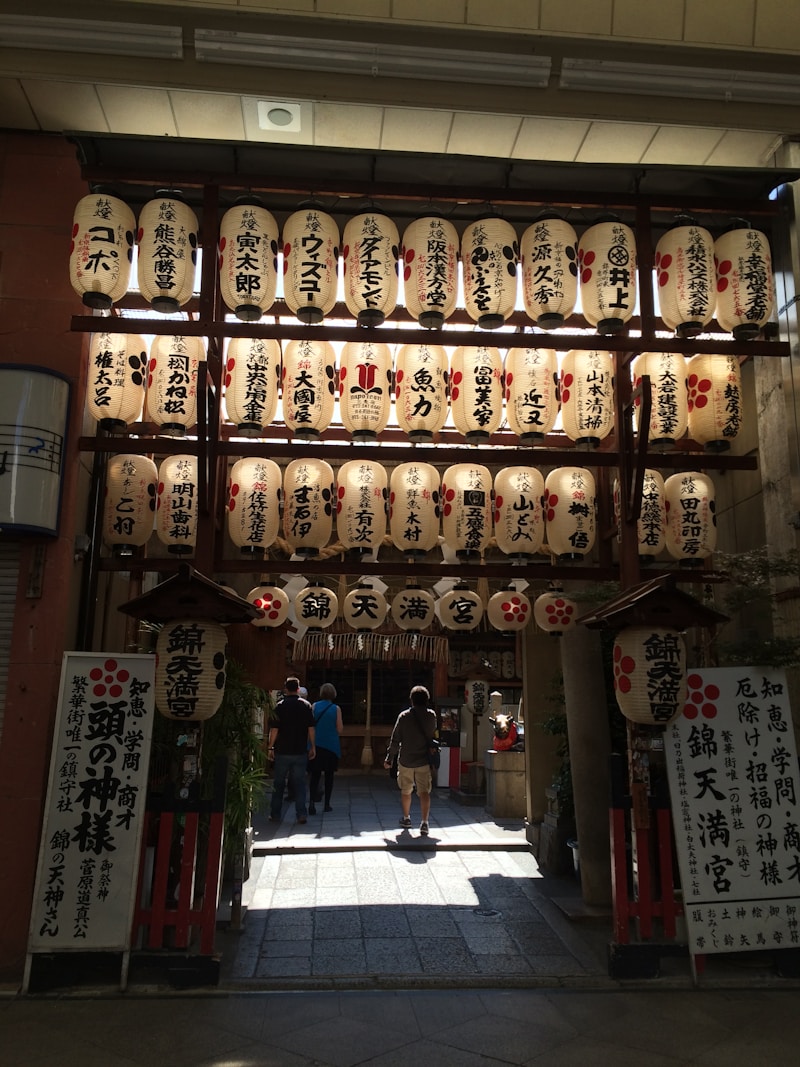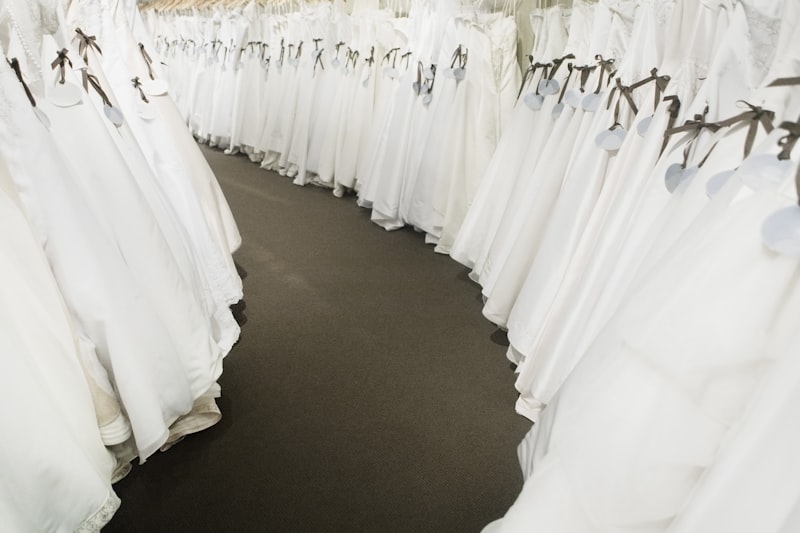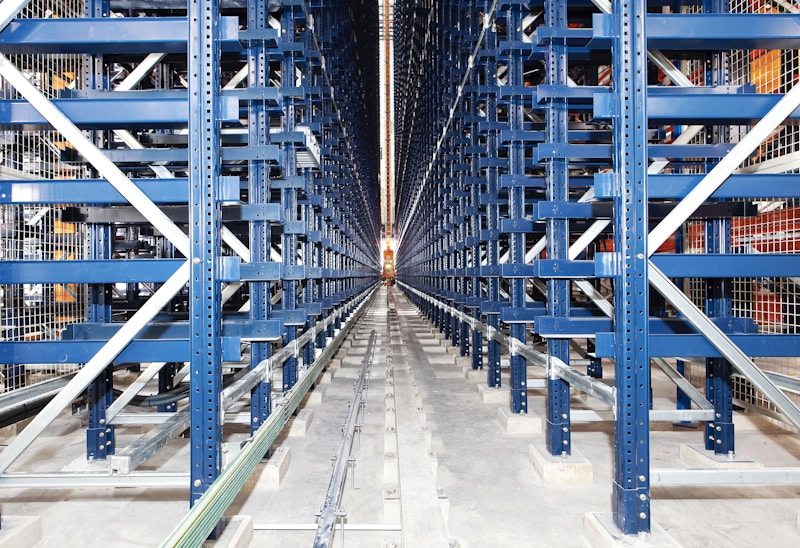Leveraging Social Media for Supplier Relationships: A Comprehensive Guide
In today's interconnected world, businesses are constantly seeking innovative ways to enhance their supplier relationships. One of the most effective strategies is leveraging social media platforms. This article will delve into how social media can facilitate better communication, foster collaboration, and ultimately strengthen supplier relationships. As we navigate through this topic, we will explore best practices, tools, and tips to optimize your supplier engagement through social media.Understanding the Role of Social Media in Supplier RelationshipsSocial media has transformed the way businesses and suppliers communicate and interact. Traditionally, supplier relationships relied heavily on formal communication methods such as emails and phone calls. However, with the advent of platforms like LinkedIn, Twitter, and Facebook, businesses can now engage with suppliers in real-time and more informally. This shift not only enhances transparency but also builds a sense of community and trust.Benefits of Using Social Media for Supplier RelationshipsLeveraging social media for supplier relationships offers numerous advantages:BenefitsDescriptionImproved CommunicationReal-time updates and direct communication channels.Enhanced CollaborationOpportunity to collaborate on projects and share insights.Greater VisibilityAbility to showcase brand values and supply chain innovations.Networking OpportunitiesConnecting with potential new suppliers and partners.Choosing the Right Social Media...
Maximizing Supplier Capacity: A Comprehensive Analysis for Bridal Shops
The bridal industry is a highly competitive field that requires meticulous planning and execution. Managing supplier capacity is crucial for bridal shops aiming to enhance their service offering while maintaining the quality that clients expect on their special day. This article will explore the various aspects of supplier capacity analysis specifically for bridal shops, highlighting key strategies, best practices, and tools you can use to ensure smooth operations.Understanding Supplier CapacitySupplier capacity refers to the maximum amount of products or services that a supplier can provide within a specific timeframe. For bridal shops, this includes wedding dresses, accessories, and other essential supplies that cater to the needs of brides and their parties. Analyzing supplier capacity is vital for effective inventory management, enhancing customer satisfaction, and optimizing fulfillment processes.Why is Supplier Capacity Important for Bridal Shops?Efficient Inventory Management: Accurate analysis helps in maintaining the right stock levels to meet customer demand.Enhanced Customer Satisfaction: By ensuring that the desired products are available, businesses can meet clients' expectations, leading to better reviews and referrals.Cost Management: Understanding supplier limits allows shops to negotiate better pricing based on bulk purchases when suppliers can accommodate.Key Factors In Supplier Capacity for Bridal ShopsSeveral factors influence supplier capacity, and unders...
Mastering Supplier Payment Terms Negotiation: Strategies for Success
When it comes to managing a business effectively, one of the most crucial aspects lies in the negotiation of supplier payment terms. Supplier payment terms negotiation not only impacts cash flow but can also significantly influence the overall success of a business. Understanding how to navigate these discussions effectively can lead to improved relationships with suppliers and a stronger financial position for your business.Understanding Supplier Payment TermsSupplier payment terms refer to the conditions under which a buyer will pay a supplier for goods and services. Typically, these terms outline various aspects such as payment due dates, early payment discounts, and penalties for late payments. Here are some common components of supplier payment terms:TermDescriptionNet 30Payment is due 30 days after the invoice date.2/10 Net 30A 2% discount is offered if the payment is made within 10 days; otherwise, the net amount is due in 30 days.COD (Cash on Delivery)Full payment is required at the time of delivery.PrepaymentFull payment is required before the goods or services are provided.The Importance of Effective NegotiationNegotiating payment terms is an essential skill for any business owner or procurement professional. Strong negotiation skills can lead to better cash flow management, improved supplier relationships, and overall cost savings. Here are some key benefits to consider:Improved Cash Flow: Favorable payment terms allow you to manage cash flow more effectively, enab...
Choosing Sustainable Suppliers for Wedding Dresses: A Step Towards an Eco-Friendly Wedding
Understanding Sustainable Wedding DressesIn recent years, the concept of sustainability has transcended far beyond the realm of just environmentalism; it has become a vital part of consumer choices, especially for significant events like weddings. As couples increasingly seek to make their special day more eco-friendly, the demand for sustainable wedding dresses has surged. This article guides you through the process of choosing sustainable suppliers for wedding dresses, ensuring your big day reflects your commitment to the environment.What Are Sustainable Wedding Dresses?Sustainable wedding dresses are made using eco-friendly materials and practices. These dresses often prioritize: Organic textiles Ethically sourced fabrics Local production to reduce carbon footprints Minimal waste in design and manufacturingBy choosing fabrics such as organic cotton, Tencel, or reclaimed materials, you not only reduce the environmental impact but also support suppliers who practice ethical labor policies.Why Choosing Sustainable Suppliers MattersIt's more than just aesthetics; by selecting sustainable suppliers, you contribute to: Reducing pollution Supporting local economies Promoting ethical labor practicesWhen couples opt for sustainable wedding dresses, they pave the way for a shift in the fashion industry, encouraging brands to adopt more environmentally friendly practices. Remember, the process of choosing sustainable suppliers for wedding dresses also helps in ma...
Fashion Trends and Supplier Selection: Navigating the Future of Style
Understanding Fashion TrendsIn today's fast-paced fashion industry, staying ahead of the curve is crucial for brands looking to capture the attention of style-conscious consumers. Fashion trends evolve rapidly, driven by a mixture of cultural shifts, technology advancements, and consumer preferences. This article explores the current fashion trends while shedding light on the critical aspect of supplier selection in maintaining a competitive edge.The Evolution of Fashion TrendsFashion trends are often categorized based on various factors including color palettes, materials, and styles. From sustainability to digital fashion, the landscape is ever-changing. The following table summarizes some key fashion trends currently influencing the industry:TrendDescriptionImpact on ConsumersSustainable FashionFocus on eco-friendly materials and ethical productionIncreased consumer preference for brands that prioritize sustainabilityDigital FashionVirtual clothing and online fashion showsGrowing interest in digital identities and avatarsMinimalismEmphasis on simplicity and neutral colorsShift towards timeless pieces in consumer wardrobesInclusive FashionDesigns that cater to all body types and identitiesGreater representation and acceptance in fashion narrativesSupplier Selection: A Critical ComponentWith the constant changes in fashion trends, selecting the right suppliers is more vital than ever. A supplier can make or break a fashion brand, affecting everything from production quality ...
Essential Guide to Seasonal Inventory Planning for Wedding Attire
Understanding the Importance of Seasonal Inventory Planning for Wedding AttireAs wedding season approaches, couples embark on a thorough search for the perfect wedding attire. For retailers, this presents an exceptional opportunity to optimize inventory management. Seasonal inventory planning for wedding attire is critical for meeting customer demands and maximizing sales. This article delves into the strategies, trends, and effective practices for managing wedding attire inventory throughout the seasons. What is Seasonal Inventory Planning?Seasonal inventory planning refers to the process of managing stock levels of products based on seasonal demand. For wedding retailers, this involves analyzing data and trends to predict how much inventory of wedding dresses, suits, accessories, and other attire will be needed throughout the year. This practice ensures that retailers are well-prepared for high-demand periods, such as spring and summer, which are traditionally popular for weddings.Why is Seasonal Inventory Planning Crucial for Wedding Attire?Planning inventory according to the seasons allows retailers to: Maximize Revenue: By stocking the right amount of inventory, retailers can meet customer demand, avoid stockouts, and maximize sales. Minimize Costs: Overstocking leads to increased holding costs, while understocking can result in missed sales opportunities. A well-planned inventory strategy addresses these issues effectively. Enhance Customer Satisfaction: When c...
Understanding Bridal Market Dynamics: A Comprehensive Insight
IntroductionThe bridal market is a unique intersection of fashion, tradition, and personal expression. As trends evolve and consumer behavior shifts, understanding the dynamics of this market becomes essential for businesses and individuals alike. This article delves into the intricate workings of the bridal industry, covering various aspects including trends, consumer preferences, and future projections.Key Trends in the Bridal MarketOver the past decade, the bridal market has witnessed significant transformations. Several factors contribute to these changes, including cultural influences, economic conditions, and innovations in technology. Here, we explore the prevailing trends that are shaping the market.TrendDescriptionCustomizationBrides are increasingly seeking personalized wedding experiences, leading to a rise in bespoke dresses and tailored services.Sustainable PracticesThe demand for eco-friendly materials and sustainable practices is growing, prompting designers to rethink sourcing and fabrication.Digital InfluencesSocial media platforms like Instagram and Pinterest have become pivotal in shaping wedding ideas and influencing bridal purchases.Diversity and InclusivityThere is a noticeable shift towards representing varied cultural backgrounds and body types within the bridal market.Online ShoppingOnline platforms have revolutionized how brides shop for their wedding needs, with many opting for virtual consultations.Consumer Preferences and InsightsUnderstanding con...
Unveiling the Magic: Branding Collaborations with Wedding Designers
Introduction to Branding CollaborationsIn today’s competitive market, branding has transcended traditional boundaries, allowing for innovative partnerships that can elevate both the designer's and the brand's visibility. One such dynamic collaboration exists between wedding designers and various brands, which can lead to remarkable synergies. In this article, we will explore the intricacies and benefits of branding collaborations with wedding designers, while addressing key questions and insights into the practice.Why Collaborate with Wedding Designers?Wedding designers are at the forefront of a thriving industry that not only focuses on aesthetics but also on experiences. Partnering with them can bring numerous advantages: Shared Audience: Wedding designers often have a loyal clientele seeking unique offerings. Enhanced Brand Image: Associating with reputable designers can enhance a brand’s prestige. Creative Innovation: Collaborations foster a creative environment that can produce unique products or services.Benefits of Collaborating with Wedding Designers Benefit Description Market Expansion Gain access to new markets and client demographics. Increased Visibility Collaborations allow for cross-promotion through separate marketing channels. Unique Offerings Create exclusive products that stand out in the market. Key Elements of Successful CollaborationsTo ensure a fruitful collab...
Mastering the Art of Managing Returns and Exchanges with Suppliers
IntroductionIn today's fast-paced retail environment, managing returns and exchanges with suppliers has become a critical aspect of business operations. The ability to efficiently handle these processes not only enhances customer satisfaction but also strengthens supplier relationships. In this article, we will explore best practices, strategies, and tools that can help you effectively manage returns and exchanges.Understanding the Importance of Returns and ExchangesReturns and exchanges are inevitable in retail, and they often vary by industry. In fact, studies show that around 30% of online purchases are returned, which makes efficient returns management essential for maintaining profit margins and customer loyalty. Understanding the importance of these processes is crucial for any retailer looking to succeed in today's market.Why Are Returns and Exchanges Necessary?Returns and exchanges offer several benefits, including: Customer Satisfaction: A seamless return process can enhance customer loyalty. Quality Assurance: Returns can provide feedback about product quality and supplier performance. Market Insights: Analyzing returns can reveal trends and inform inventory decisions.Best Practices for Managing Returns and ExchangesTo handle returns and exchanges effectively, retailers should implement several best practices.1. Clear Return PoliciesHaving a simple and transparent return policy is essential. Customers should easily understand the terms and conditions for re...
Bridal Fashion Influences on Supplier Choices: Navigating the Trends for a Successful Wedding
Understanding the Impact of Bridal Fashion on Supplier SelectionWeddings are a celebration of love, and at the heart of these celebrations lies the concept of bridal fashion. As couples plan their big day, the aesthetics of bridal fashion significantly influence their choices regarding suppliers. This article explores how current bridal fashion trends dictate supplier choices, helping couples make informed decisions. Whether it’s about wedding dresses, accessories, florists, or venues, understanding these influences can make a significant difference.The Importance of Bridal Fashion in Wedding PlanningBridal fashion is not just about the dress; it encompasses a wide array of elements that define a couple's wedding aesthetic. From the gown to shoes, makeup, and hair, every aspect is meticulously planned. Here, we delve into how bridal fashion inspires various supplier choices:1. Wedding Dresses and Gown SuppliersThe wedding dress is often the centerpiece of bridal fashion. Couples often look for suppliers who align with their desired style, whether it’s classic, bohemian, modern, or vintage. Designers like Vera Wang and Pronovias have set the trends, influencing numerous suppliers and boutiques. For instance, if the current fashion trend favors minimalistic designs, bridal boutiques will stock more gowns that align with this aesthetic.2. Accessories: Completing the Bridal LookAccessories play a crucial role in the overall bridal look. The choice of jewelry, veils, and hairpiece...
Navigating Supply Chain Disruptions: Strategies for Resilience
Understanding Supply Chain DisruptionsIn today's interconnected world, supply chain disruptions have become an inevitable challenge for businesses across various industries. With events like natural disasters, geopolitical tensions, and pandemics causing significant interruptions, understanding how to navigate these disruptions is more crucial than ever. In this article, we will explore the key strategies that businesses can implement to build resilience in their supply chains.Types of Supply Chain DisruptionsBefore delving into strategies, it’s important to recognize the different types of supply chain disruptions that companies might face:Type of DisruptionDescriptionNatural DisastersEvents such as hurricanes, earthquakes, and floods that can halt production.Geopolitical IssuesTrade wars and political instability in certain regions that can affect supply routes.PandemicsHealth crises like COVID-19 that disrupt workforce availability and logistics.Technological FailuresCyberattacks or system outages that hinder supply chain operations.Impact of Disruptions on BusinessesThe effects of supply chain disruptions can be far-reaching and detrimental. Companies can face:Increased operational costsLoss of revenue and market shareDecline in customer satisfactionDamage to brand reputationPreparing for Supply Chain DisruptionsPreparation is the key to minimizing the impact of disruptions. Below are effective strategies to enhance your business's resilience:Diversify SuppliersRelying on...
Balancing Designer Creativity and Inventory Needs: A Comprehensive Guide
IntroductionIn the ever-evolving world of fashion and interior design, the ability to balance designer creativity with inventory needs is crucial. This balancing act is not just a challenge; it is an essential skill that can determine the success of a brand. From emerging designers to established labels, finding a harmonious relationship between artistic expression and practical inventory management is key. This article will delve into the intricacies of this challenge, offering insights, strategies, and best practices.The Importance of Balancing Creativity and InventoryDesigners thrive on creativity; it is the core of their identity and their work. However, when this creative vision meets the realities of inventory management, conflicts can arise. The following points illustrate why this balance is vital: Consumer Demand: Understanding what customers want while staying true to the designer's vision can lead to enhanced sales and customer satisfaction. Cost-Effectiveness: Efficient inventory management can reduce costs, allowing designers to invest more in creativity. Market Trends: Staying relevant in the market requires designers to adapt their creativity based on inventory capabilities.Strategies for Achieving BalanceHere are some effective strategies designers can implement to harmonize their creative processes with their inventory requirements:1. Conduct Market ResearchBefore embarking on a new design project, understanding market trends through research is esse...
Maintaining Product Consistency with Design Partners: A Key to Success
In today’s fast-paced market, maintaining product consistency is essential for any brand striving for success. Whether you are a startup or an established company, collaborating with design partners can significantly influence the quality and uniformity of your product offerings. In this article, we will explore how to maintain product consistency with design partners, the benefits of strong partnerships, and best practices for successful collaboration.Understanding Product ConsistencyProduct consistency refers to the reliability and uniformity of products across different batches and design iterations. Consistency ensures that customers experience the same quality, functionality, and design aesthetic, contributing to brand loyalty and trust. A well-coordinated effort with design partners plays a crucial role in achieving this uniformity.The Importance of Design PartnersWhen companies collaborate with design partners, they tap into external expertise that elevates their product quality. Design partners, including design agencies, freelance designers, and industry specialists, bring unique perspectives and skills that can refine a product's aesthetics and performance. Here are some key reasons for partnering with design experts:Access to Specialized Skills: Design partners possess specific skills tailored to your needs, whether it be user interface design, product development, or packaging innovation.Fresh Perspectives: External partners often see things from a different angle...
Exploring International Supplier Options: Unlocking Global Opportunities for Your Business
In today's interconnected world, businesses of all sizes are discovering the advantages of exploring international supplier options. The ability to source products and services from different parts of the globe can lead to improved cost efficiency, better quality goods, and enhanced competitiveness. However, navigating the complex landscape of international suppliers involves understanding various factors such as cultural differences, shipping logistics, and legal regulations. In this article, we will delve deep into the benefits, challenges, and strategies for effectively exploring international supplier options.The Benefits of International SuppliersUtilizing international suppliers can provide numerous advantages for businesses, including:AdvantageDescriptionCost SavingsSourcing from countries with lower production costs can significantly reduce overall expenses.Diverse Product RangeAccess to unique products and materials not readily available domestically.Quality and ExpertiseSome regions specialize in certain industries, providing high-quality goods and expertise.Market ExpansionBuilding relationships with international suppliers can help to expand into new markets.Understanding Global MarketsBefore diving into exploring international supplier options, it's crucial to understand the specific global markets that interest your business. Different countries have their unique strengths and weaknesses, which can influence your supply chain decisions. For instance, countries l...
Mastering the Art of Negotiating Supplier Contracts: A Comprehensive Guide
Understanding Supplier Contracts and Their ImportanceIn today's competitive marketplace, negotiating supplier contracts is a crucial skill that can greatly impact your business's bottom line. A well-negotiated contract not only secures favorable terms and conditions but also strengthens your relationships with suppliers. This article will explore the essentials of negotiating supplier contracts, offering practical tips and strategies to ensure you achieve the best outcomes.The Basics of Supplier ContractsSupplier contracts are formal agreements between a business and its suppliers, outlining the terms of the relationship, including pricing, delivery schedules, quality standards, and payment terms. A clear and comprehensive contract helps protect both parties and lays the foundation for a successful partnership.Key Elements of Supplier ContractsWhen negotiating supplier contracts, it is essential to pay attention to several key elements:ElementDescriptionPriceClearly define the cost of goods or services, including any discounts or payment terms.Delivery TermsSpecify delivery schedules, shipping methods, and responsibilities for both parties.Quality StandardsSet expectations for product quality and the right to inspect goods upon delivery.Termination ClauseOutline the conditions under which either party may terminate the contract.Dispute ResolutionDetermine how conflicts will be resolved, such as mediation or arbitration.Strategies for Successful NegotiationNegotiating a suppli...
Unlocking Success: Strategic Partnerships with Dress Manufacturers
IntroductionIn the ever-evolving world of fashion, strategic partnerships with dress manufacturers have become a key driving force for businesses looking to expand their reach and increase profitability. These collaborations not only streamline production processes but also enable brand enhancement and market penetration. In this article, we will delve into the significance of forming strategic partnerships with dress manufacturers, explore the benefits, challenges, and provide actionable insights on how to form successful alliances that can drive your business forward.The Importance of Strategic Partnerships with Dress ManufacturersStrategic partnerships are essential for brands looking to differentiate themselves in a competitive landscape. By collaborating with dress manufacturers, companies can leverage various strengths that each party brings to the table, ensuring mutual growth.Access to ExpertiseDress manufacturers possess extensive knowledge about fabrics, production techniques, and market trends. By forming partnerships, brands gain access to this expertise. This allows them to innovate designs and produce high-quality garments that resonate with their target audience.Cost EfficiencyManufacturers often have established supply chains and can produce clothing at a lower cost due to economies of scale. By partnering with them, brands can reduce their production expenses and allocate resources to other critical areas, such as marketing or product development. Additionall...
Mastering Effective Communication with Suppliers: Strategies for Success
In today's fast-paced business environment, effective communication with suppliers is crucial for maintaining strong relationships and ensuring the smooth operation of your company. Building productive partnerships can help you minimize risks, enhance collaboration, and boost your overall performance. This article will delve into the importance of effective communication with suppliers, explore practical strategies, and offer tips to strengthen these vital relationships.Understanding the Importance of Effective CommunicationEffective communication lays the foundation for any successful business relationship. When it comes to suppliers, clear and open lines of communication can lead to: Improved Collaboration: Frequent interactions help bridge the gap between expectations and deliverables. Enhanced Problem-Solving: Timely discussions can resolve issues before they escalate. Cost Efficiency: Clear communication can eliminate misunderstandings, ultimately reducing expenses.Potential Challenges in Supplier CommunicationDespite the importance of clear communication, several challenges may arise: Language Barriers: Suppliers from different regions may have varying levels of language proficiency. Cultural Differences: Distinct cultural norms can affect expectations and communication styles. Technological Constraints: Different companies may use various tools for communication, which can create confusion.Key Strategies for Effective Communication with SuppliersTo ov...
Collaborating on Customization Options for Dresses: Elevating Fashion to New Heights
In the highly competitive world of fashion, the power of customization cannot be underestimated. Collaborating on customization options for dresses has emerged as an essential trend that not only enhances customer satisfaction but also fosters brand loyalty. This article will delve into the various aspects of this collaboration, its benefits, best practices, and the innovative technologies that are driving this trend forward.The Importance of Customization in Modern FashionIn today’s market, consumers are looking for unique designs that reflect their personal style. The traditional one-size-fits-all approach is becoming increasingly obsolete. Customization allows customers to:Express Individuality: Every customer has a unique taste, and personalized options let them express it.Ensure Perfect Fit: Customized dresses provide a fit that is tailored to the individual's body shape, enhancing comfort and confidence.Enhance Emotional Connection: When customers are involved in the creation process, it creates a deeper emotional bond with the product.Collaboration in Customization: How It WorksCollaboration involves various stakeholders, including designers, manufacturers, and customers. Here’s how a typical customizable dress process might unfold:StepActionStakeholders Involved1Design ConceptsDesigners2Customer InputCustomers3Prototype DevelopmentManufacturers4Feedback CollectionCustomers5Final AdjustmentsDesigners & Manufacturers6ProductionManufacturers7DeliveryRetailersUtilizing Te...
Engaging Designers in Inventory Planning: A Comprehensive Guide
Understanding the Role of Designers in Inventory PlanningEffective inventory planning is a crucial aspect of modern businesses, and when it comes to optimizing this process, engaging designers can make a significant impact. Designers bring their creativity and problem-solving skills to the table, helping companies create a functional, visually appealing inventory system. This article delves into how engaging designers can enhance inventory planning, the benefits it brings, and the strategies to effectively collaborate with designers.The Importance of Inventory PlanningInventory planning is vital for businesses to maintain the right stock levels, reduce costs, and improve customer satisfaction. By having an organized inventory system, companies can avoid stockouts and overstock situations which can lead to financial losses. Involving designers in this process can introduce innovative solutions and streamline operations.Benefits of Engaging Designers in Inventory Planning Enhanced Visual Organization: Designers can create systems that are not only functional but also visually intuitive, making it easier for employees to locate and manage inventory. User-Friendly Interfaces: With a designer's touch, inventory management software can become more accessible, featuring user interfaces that improve usability and reduce training time. Creative Problem Solving: Designers are trained to think outside the box, which can lead to innovative inventory solutions that traditional methods ...
Exploring Creative Partnerships in Bridal Fashion: A New Era of Innovation and Collaboration
As the wedding industry continues to evolve, one of the most exciting developments we see is the rise of Creative Partnerships in Bridal Fashion. This concept goes beyond traditional collaborations; it explores how fashion designers, bridal boutiques, florists, and other creative professionals come together to create uniquely memorable experiences for brides. This article will delve into the various forms these partnerships can take, highlight notable examples, and discuss the benefits and challenges they present. The Evolution of Bridal Fashion The bridal fashion industry has undergone significant changes over the decades. Gone are the days when brides had to choose from a limited selection of dresses. Today, brides seek personalized experiences that resonate with their individuality. The shift toward Creative Partnerships in Bridal Fashion reflects this evolving mindset, as creative collaborations allow for greater innovation and uniqueness. Understanding Creative Partnerships Creative partnerships can take many forms, including: Designer collaborations: Fashion designers teaming up with bridal shops to create exclusive collections. Cross-industry alliances: Collaborations between bridal wear designers, florists, and event planners to craft holistic wedding experiences. Social media influencer collaborations: Leveraging the online presence of influencers to promote brands and products. Notable Examples of Creative Partnerships Across the globe, many Cre...



















